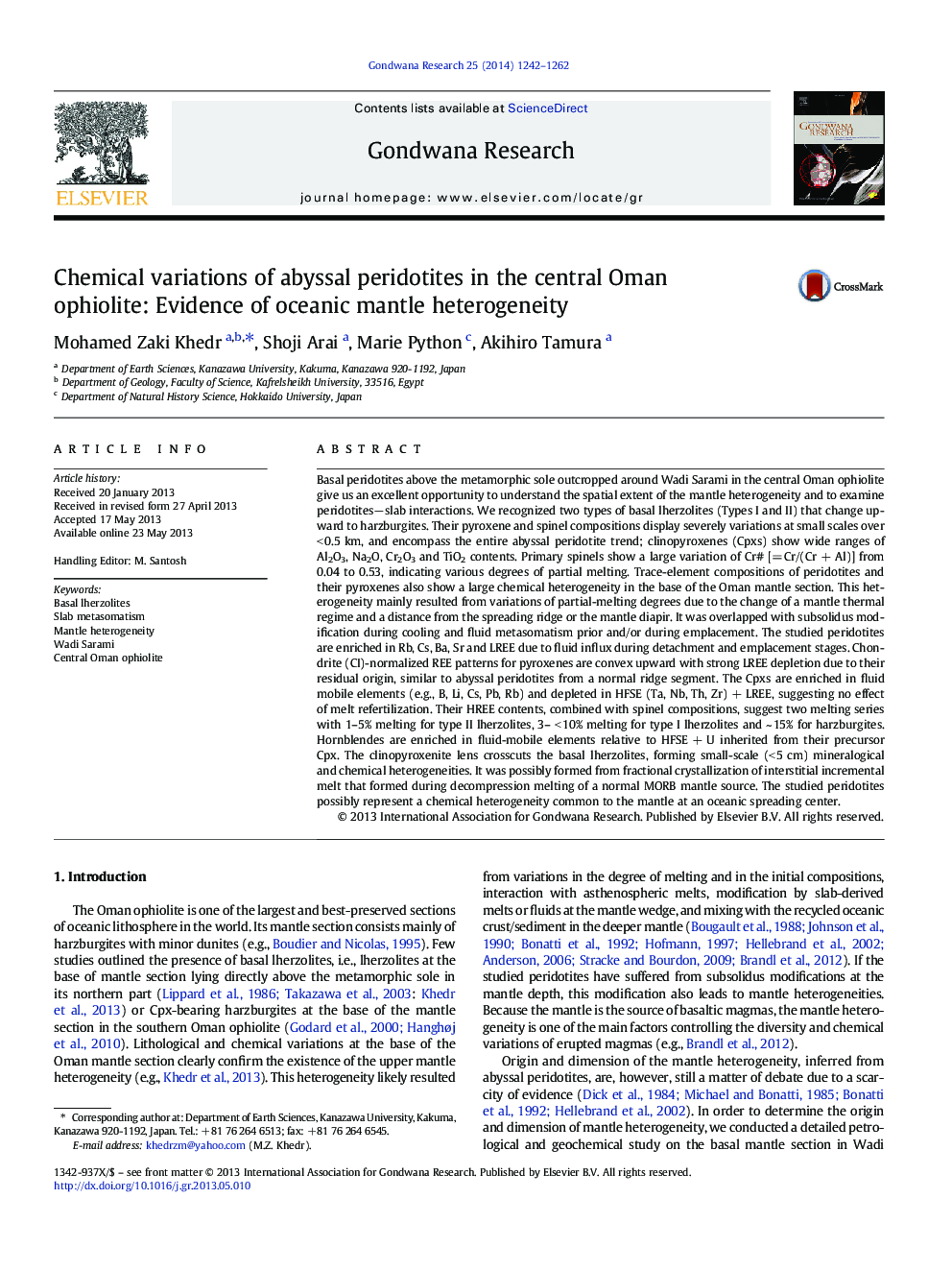| Article ID | Journal | Published Year | Pages | File Type |
|---|---|---|---|---|
| 4726987 | Gondwana Research | 2014 | 21 Pages |
•Clinopyroxene-bearing Na, Al and Ti in Type II lherzolite of asthenospheric origin•Factors causing mantle heterogeneity inferred from Oman abyssal peridotites•Origin of clinopyroxenite lens cutting abyssal peridotites in a small scale
Basal peridotites above the metamorphic sole outcropped around Wadi Sarami in the central Oman ophiolite give us an excellent opportunity to understand the spatial extent of the mantle heterogeneity and to examine peridotites−slab interactions. We recognized two types of basal lherzolites (Types I and II) that change upward to harzburgites. Their pyroxene and spinel compositions display severely variations at small scales over < 0.5 km, and encompass the entire abyssal peridotite trend; clinopyroxenes (Cpxs) show wide ranges of Al2O3, Na2O, Cr2O3 and TiO2 contents. Primary spinels show a large variation of Cr# [= Cr/(Cr + Al)] from 0.04 to 0.53, indicating various degrees of partial melting. Trace-element compositions of peridotites and their pyroxenes also show a large chemical heterogeneity in the base of the Oman mantle section. This heterogeneity mainly resulted from variations of partial-melting degrees due to the change of a mantle thermal regime and a distance from the spreading ridge or the mantle diapir. It was overlapped with subsolidus modification during cooling and fluid metasomatism prior and/or during emplacement. The studied peridotites are enriched in Rb, Cs, Ba, Sr and LREE due to fluid influx during detachment and emplacement stages. Chondrite (CI)-normalized REE patterns for pyroxenes are convex upward with strong LREE depletion due to their residual origin, similar to abyssal peridotites from a normal ridge segment. The Cpxs are enriched in fluid mobile elements (e.g., B, Li, Cs, Pb, Rb) and depleted in HFSE (Ta, Nb, Th, Zr) + LREE, suggesting no effect of melt refertilization. Their HREE contents, combined with spinel compositions, suggest two melting series with 1–5% melting for type II lherzolites, 3– < 10% melting for type I lherzolites and ~ 15% for harzburgites. Hornblendes are enriched in fluid-mobile elements relative to HFSE + U inherited from their precursor Cpx. The clinopyroxenite lens crosscuts the basal lherzolites, forming small-scale (< 5 cm) mineralogical and chemical heterogeneities. It was possibly formed from fractional crystallization of interstitial incremental melt that formed during decompression melting of a normal MORB mantle source. The studied peridotites possibly represent a chemical heterogeneity common to the mantle at an oceanic spreading center.
Graphical abstractFigure optionsDownload full-size imageDownload as PowerPoint slide
